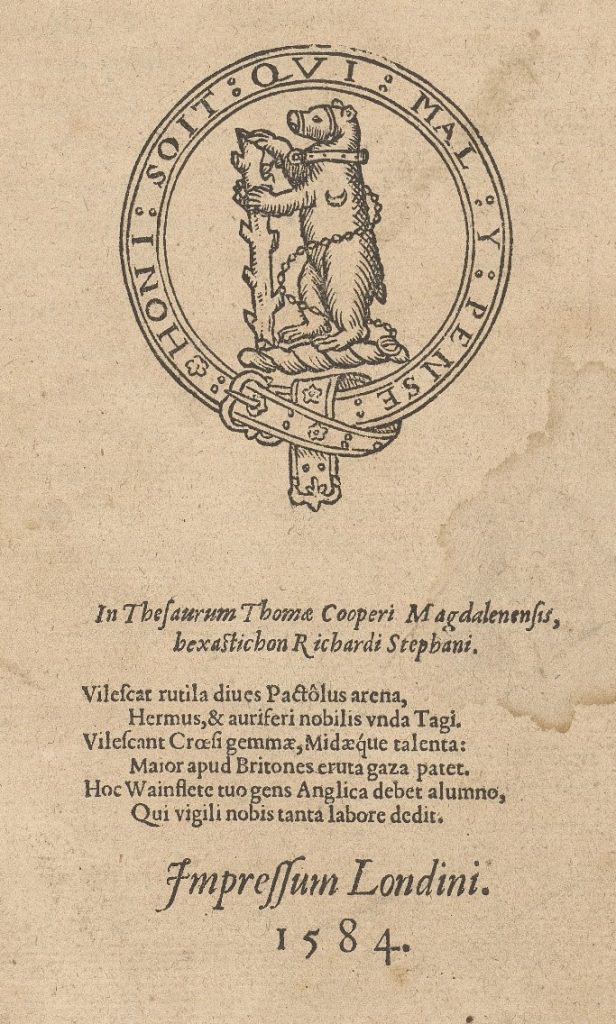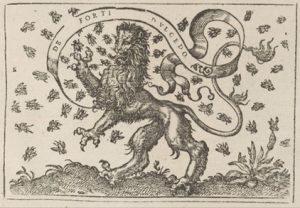November 8, 2024, by Chloe
Decoding Images in Early Modern Print
This is guest blog by Tom Nixon-Roworth, who recently undertook a three-month WRoCAH-funded Research and Employability Project (REP) on the Parish Library Collections, in which he reflects on his experience working at Manuscripts and Special Collections.
It may come as no surprise to learn that as soon as the project was confirmed I was eagerly anticipating its start. As a current PhD student looking at clergy and lay relations, I knew a project delving into publications owned (and in some cases written) by parish clergy was the REP for me.
Yet, as the start date of the project loomed, I became increasingly anxious. Whilst this project and my research interests certainly fall under an Early-Modern umbrella, I knew I would be faced with learning a host of new and unfamiliar skills. This was a daunting prospect initially; especially given I had not studied theology before. And, as you can see from browsing, it is striking just how significant a level of theological understanding some of the images do indeed demand. However, as soon as the placement began, these fears quickly subsided. I was given clear instructions from the outset and was constantly encouraged to discuss ideas. Within the space of a few weeks, my own understanding of lots of the complex themes and ideas improved drastically. Throughout the entirety of the project I felt comfortable asking for help and advice, especially from Ursula, my project supervisor, and so too from everyone part of the Manuscripts and Special Collections team.
Project
To begin with, my role in the project involved populating a spreadsheet a previous placement student had created. This helped me understand exactly what to look for in the images. Categories included ‘Images for Decoding’, ‘Printer’s Devices’ and ‘Ornaments’. From there, I requested books, analysed their contents and then added my findings to the spreadsheet. About half-way through the project, my primary task changed, and I began developing worksheets based on what I had found. This was a hugely enjoyable experience as I had to think about creating questions that would invite contributions from students. As I write this blog post, these worksheets are soon to be used in undergraduate modules for different courses.
One of my primary aims was to better understand how different university staff members collaborate to produce learning materials. Due to the kindness of everyone at MSC, I was provided with a detailed understanding of what everyone does and how they work together. I attended meetings between academics that discussed how best to use the Parish Library Collections and I was given a tour of the entirety of the King’s Meadow Campus, including the Digitisation Studio.
Also, very fortunately, I was able to deliver two workshops discussing the material to members of the public. This was inside the Old Rectory in Loughborough. The idea for these workshops developed after the project had begun and I owe a great deal of thanks to Ursula for organising them. Other staff at Manuscripts and Special Collections also helped significantly by preparing the necessary learning materials.

This ‘Thesaurus linguae Romanae & Britannicae’ is dedicated to the Earl of Leicester, Robert Dudley, and the title page shows in the place of the printer’s device the coat of arms of the bear and ragged staff. It has a long association with the Earldom of Warwick, and Robert Dudley adopted it as his emblem.
Reflections
Above all else, what surprised me most was just how possible it was to get at the techniques used by authors and printers to make their books stand out and how certain narratives and images have reappeared over time. Take Gulielmi Rouillii’s printer’s device (see above), a depiction of the classic story of Samson and the Lion. As Ursula pointed out, it is almost identical to the previous branding of the iconic golden syrup brand, Tate & Lyle. So too, the coat of arms of the Earl of Leicester, Robert Dudley (also see above) is instantly recognisable as an older version of Warwickshire County Cricket Club’s current logo.
As well as all the eye-catching illustrations, initials and ornaments I came across, incidents of historical recycling like these made me fundamentally reconsider the relationship between images and text in Early-Modern books. In brief, sometimes images in these books related directly to the surrounding text and other times they did not; their inclusion instead appearing to be entirely at random.
I thoroughly enjoyed every aspect of this placement. Apart from meeting all my previous aims and expectations, I have gained new skills relevant to my thesis and wider employability.
If you’d like to carry out some research of your own, feel free to visit our Reading Room – to find out more, or to book an appointment today, please contact us at mss-library@nottingham.ac.uk.
No comments yet, fill out a comment to be the first


Leave a Reply